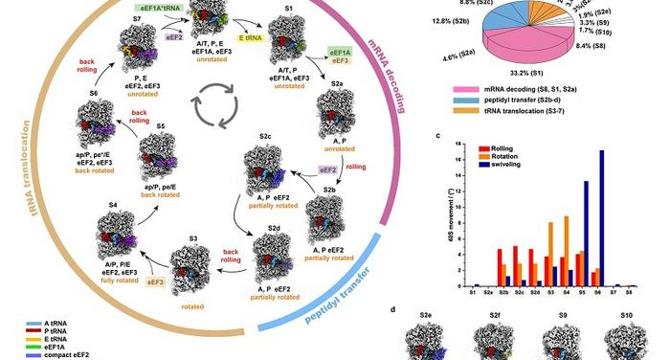Bioengineer
1M
231

Image Credit: Bioengineer
New Study Reveals High-Resolution Insights into Ribosome Dynamics in Their Natural Environment
- Researchers have illustrated the dynamic nature of ribosomal translation within cellular contexts using cryo-electron microscopy and GisSPA software.
- They captured the movement of the small subunit of the ribosome throughout the translation process.
- 3 key elongation factors were involved in the periodic molecular interactions of the ribosome, revealing their timing and conformational changes.
- Eukaryotic ribosome dynamics were captured at high resolution, highlighting the complex dynamics of ribosomes.
- The study identified how eEF2 stabilizes the ribosomal context to enable optimal function during the peptidyl transfer reaction.
- Researchers captured transient states of the ribosome that were previously elusive, offering a new way of interpreting molecular dynamics.
- The study demonstrated that ribosomes are not static entities but operate within a dynamic framework that reflects their functional roles.
- This work stands as a beacon of progress, inviting future investigations into the broader implications of ribosome dynamics.
- The novel approach allows researchers to capture the subtleties of ribosome interactions and the potential for therapeutic modulation.
- The findings may pave new avenues for therapeutic interventions targeting dysfunctional translation, a common theme in many diseases.
Read Full Article
13 Likes
For uninterrupted reading, download the app